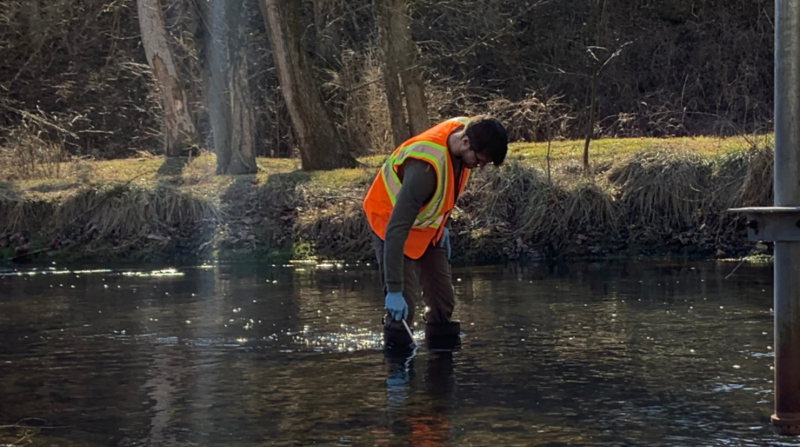Located in east Springfield, Missouri, Pearson Creek joins the James River, just upstream of Lake Springfield and is part of the water supply for Greene County.
Unfortunately, Pearson Creek has been on the State of Missouri Impaired Waters list since 2006. This list, which is maintained by the state in accordance with the federal Clean Water Act, identifies threatened streams, river segments and lakes.
Pearson Creek is on the list for two reasons. The first is it lacks organisms like worms, insects and other creatures that are important for a healthy aquatic ecosystem. The other reason is due to high levels of E. coli, a disease-causing bacterium, in the water.
To get the creek off the list, local agencies must work together to fix the problem. This includes ensuring E. coli no longer exceeds permissible levels.
The effort to restore the creek has been challenging, but a group of experts have been working together to do the hard work. One of them is environmental scientist Marc Owen.
Owen is a staff member and assistant director of the Ozarks Environmental Water Resources Institute (OEWRI), an institute housed within Missouri State University’s School of Earth, Environment and Sustainability.
OEWRI’s mission is to advance our scientific understanding of water resource quantity, quality and distribution in Ozarks watersheds. Directed by Robert Pavvlowsky, they seek to understand and improve the quality of water in the area. They have been working to help the community since 2005.
“We have a wide range of experiences to bring to the table to help solve these problems.” Owen said.
What could be the cause of contamination?
It’s hard to tell where the bacteria in Pearson Creek are coming from. This is an example of “non-point source” pollution, meaning that the contamination cannot be traced back to a single spot on the landscape.
E. coli is an indicator of fecal contamination from warm-blooded animals so isolating the pollution source can be complex. The Pearson Creek watershed has potential sources from both rural areas and urban developments. One example may be when cattle have free access to the stream. Another potential source may be failing septic systems, which may leak into the ground and flow to Pearson Creek.
As of right now, the cause of the E. coli is still uncertain. But according to Owen, who has worked on Pearson Creek studies since 2008, identifying the sources of the bacteria is key to solving the issue.
How is OEWRI helping?
OEWRI is studying how the E. coli changes over time. Every two weeks on Wednesdays, a team comprising Owen, his graduate students and other institute staff sample the creek at the same site and time to test for E. coli and other constituents, like nutrients. The purpose is to collect long-term data to better understand how pollution is influenced by changing stream flows and across different seasons
“The water is always changing. It could be hot or cold. It could have rained recently, or it may not have rained at all,” Owen said.
The team has been conducting tests every other week since 2017. The team members capture the range of conditions to measure what influences the water quality.
“The students play a vital role in the cause,” Owen said. “They’re trained to go out and collect the water. They collect it according to protocols and bring it back to the lab for processing.”
OEWRI plans to continue surveying Pearson Creek to understand its changes.
“Our data is showing that the annual concentration of E. coli has been decreasing since 2017,” Owen said.
What’s ahead?
Although Springfield is a growing city, regulations, sanitary sewer infrastructure maintenance and other safeguards have been put into place over the years to help mitigate pollution. This means there is hope for Pearson Creek.
This summer, OEWRI plans to start a microbial source tracking project. This project is partnered with Dr. Babur Mirza, a faculty member in MSU’s biology department. Mirza will lead the biology department in testing the E. coli’s DNA to figure out what the source may be. The two main sources the team will look at are humans and cattle but may even test other sources like pet waste. The goal is to determine whether the bacteria are coming from humans or animals.
“We hope to isolate the source to think about what programs can be put in place to solve these issues,” Owen said.
This project stands out because it brings the community together. It highlights one of the three pillars of Missouri State’s public affairs mission — community engagement. The students involved learn the importance of contributing their knowledge and experiences to benefit their own community and the broader society.
“The City of Springfield, Greene County, City Utilities and the university are working together, and I don’t know if that occurs in a lot of communities,” Owen said, “We’re here to help our community solve problems like this.”
Learn more about programs in earth, environment and sustainability

